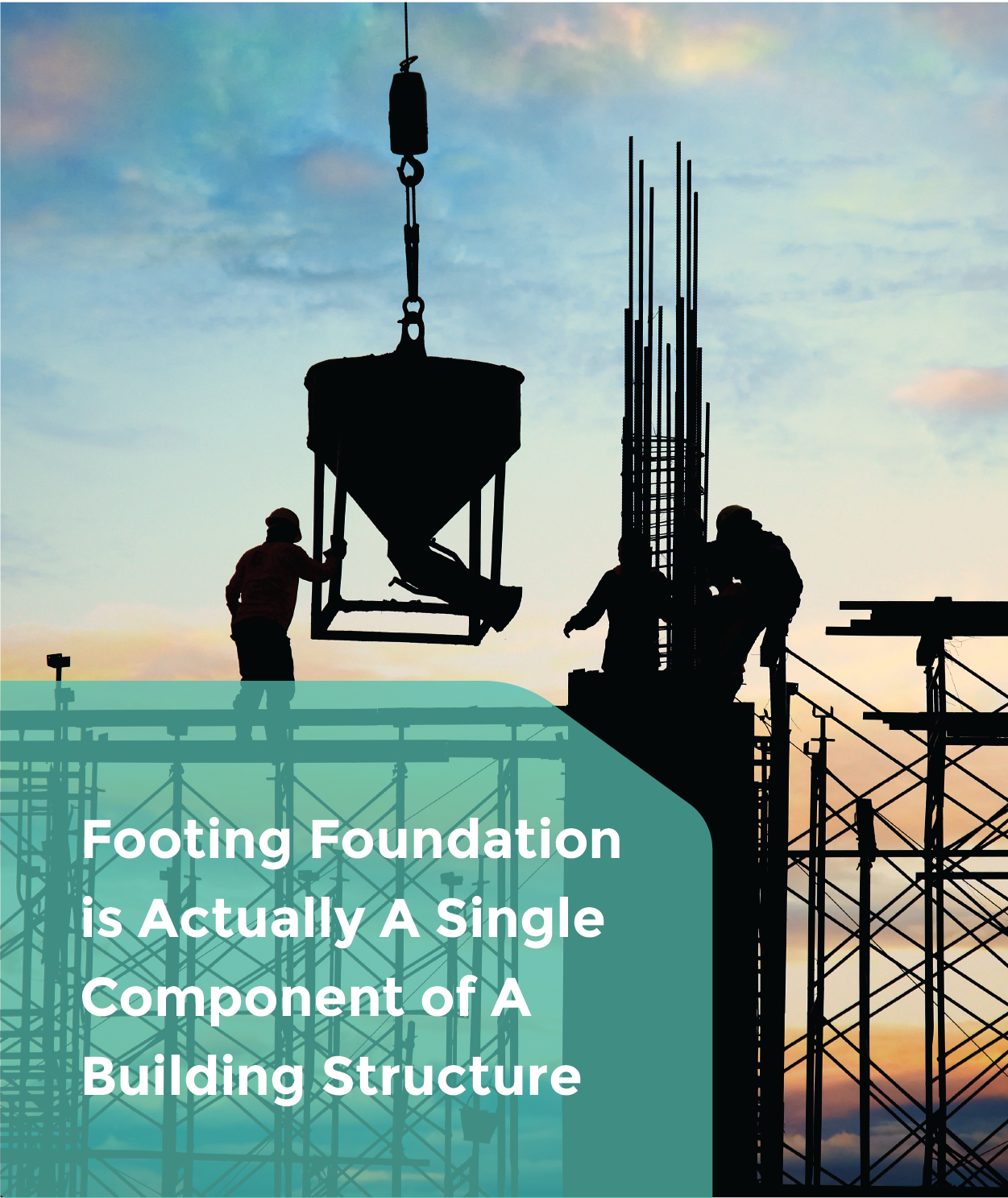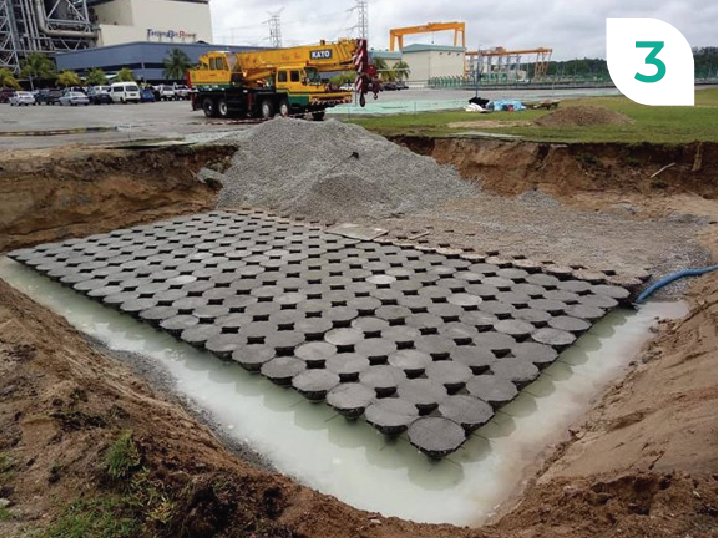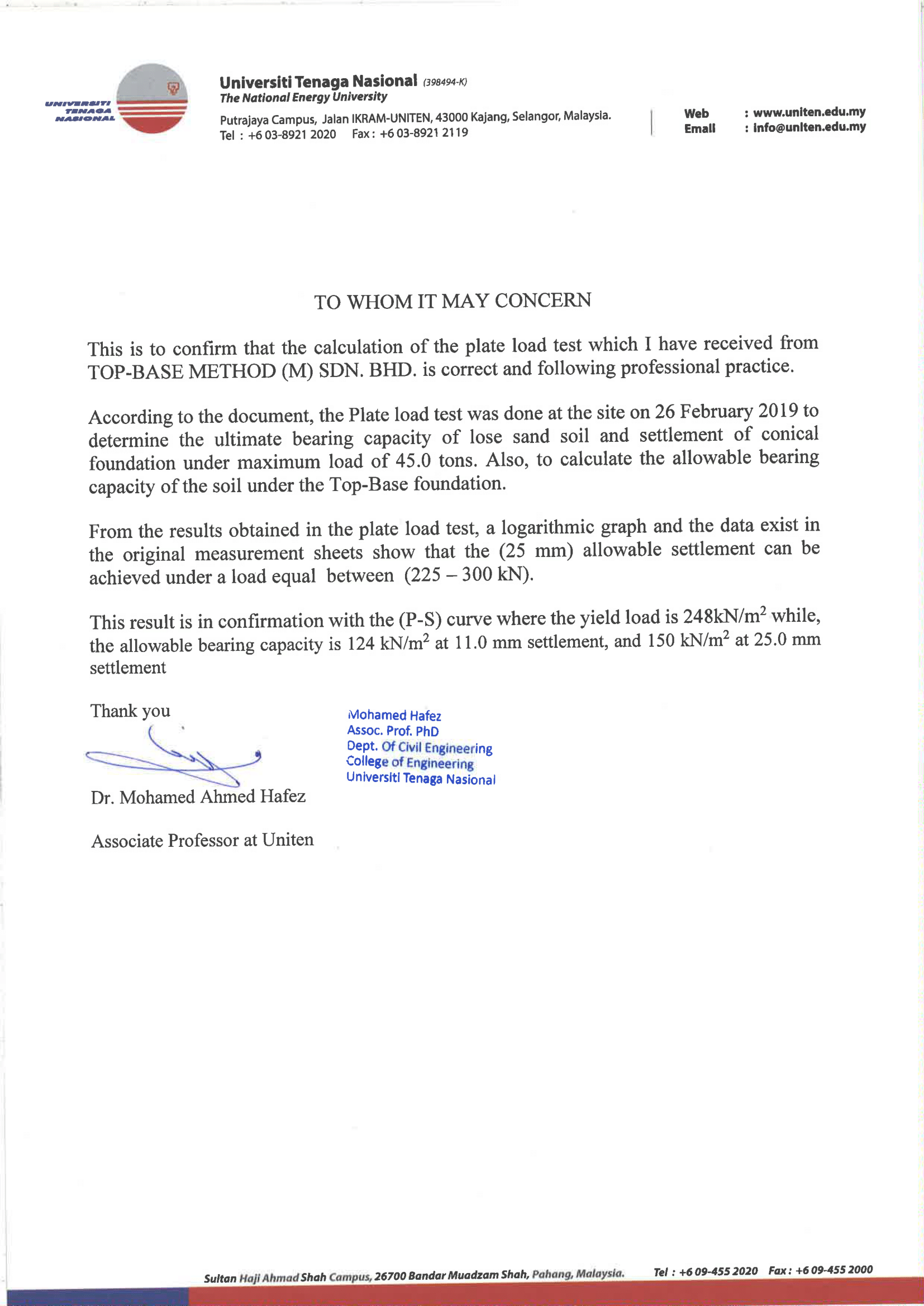Top-Based Method Malaysia Sdn. Bhd.
Most of the flat plain where the large cities in Japan are located is covered with soft or very soft alluvial deposits.
We often face problems in civil engineering when constructing structures on such very soft ground. When a structure is not very heavy, it can be built safely with only proper improvements (without piles) to the nearsurface and/or subsurface ground. Engineers must decide what improvement method is the best of construction, judging by cost performance, reliability and handling capability.
Recently a new method has been invented which assembles the top-shaped concrete blocks and places them on the ground. A group of these top blocks is used as a shallow foundation replacing the short piles.
When the top-shaped blocks are placed on crusher-run, which is spread over the soft ground. To locate the position of an individual top block and to reinforce a group of top blocks, a lattice of iron rods is placed on the crusher-run. It has been reported that several real structures constructed with this new method show the drastic improvements of reducing settlement and increasing bearing capacity of the structures. However, no one has investigated why this happens.
Investigation behavior of top base foundation on a soft ground, the top base method is believed to modify and improve the settlement and the bearing capacity of the foundation ground. In situplate loading tests have been performed to verify the differences between several foundation methods. In addition, laboratory model tests have been conducted to study of the behavior of the foundation ground when subjected to the load applied on the top base blocks.
Measurement and interpretation of loading tests of concrete top blocks on soft ground by:
Katsuhiko Arai
Fukui University, Fukui, Japan
Yuzo Ohnishi
Masakuni Horita
Kyoto University, Kyoto, Japan
Ikuo Yasukawa
Fushimi Technical High School, Kyoto Japan

Foundation for construction
Geotechnical engineers encounter issues in their field, such as bearing capacity and foundation settlement that can significantly affect the safety and use of structures.
Thus, in the event that you wish to build a structure on a ground with insufficient bearing capacity and are concerned about settlement, you should choose a foundation method that
matches the specific function of that structure.
The foundation for construction required can be either shallow or deep.
Deep foundations transfer the load to a deeper depth beneath the surface of the ground. On the other hand, the load is transferred to the stratum at a shallow depth when a shallow foundation is used.
The depth of the soil in which the foundation is built determines the depth of the foundation. The foundation for construction should at least be able to keep out groundwater, act as a barrier to soil vapour and water as well as support the structure above.

Correct building foundation techniques have a big impact on structural stability, constructability, and economic efficiency.
This is true even if the structural load isn’t as large as the bearing load.
If the piles are extended beyond the weathered rock bed, the pile foundation generally becomes an excessive design, affecting the construction and economic efficiency of the
building.
As a result, applying the top-base method increases bearing capacity and reduces settlement, especially in cases where settlement is not uniform.
Additionally, it is also a footing foundation method to help strengthen the ground by conforming it to nature’s providence, without considering the full depth of the ground, hence creating the biggest advantage in both constructability and economics.

Footing foundation is actually a single component of a building structure.
A footing is the lowest part of a foundation that is in contact with the soil. It helps to support the foundation, which transfers the structural load to the larger area on soil.
Footings prevent settling by supporting the foundations and ultimately the structure, thus it is imperative in areas with problematic soils.
In the Top-Base Method, the most important characteristics and effects are the stress distribution effect of the cone part of the top-blocks in the 45 ground contact surface with the
crusher-run layer within the void, as well as the lateral deformation prevention by the pile part of the top bottom with penetration resistance.
This Top-Base Method is ideal for reinforcing the ground and improving the footing foundation with rigid bodies by triggering settlement in the ground evenly with uniform load
distribution.


The Japanese Civil Engineering Society awarded a technical development award
for its results after applying this technique to at least 6000 sites during the 1980s in order to confirm its adequacy.
In about 1990, this method was introduced to domestic Korea, where it has been proved with successful construction results at more than 2,000 sites.
As a means of ensuring top-based method technical development, Top Base Method has developed an in-place top-place method in conjunction with United and established a joint technical network.
Through the application of the in-place top-base method, the defects of existing factory-fabricated top-base methods have been epochally corrected and the existing top-base
method have been developed further in terms of safety, durability and cost effectiveness.
The top-base method will expand its application fields and integrate, step-by-step, between the company and college in the future as the load transfer mechanism concept is researched and advanced systematically.
200
Success Projects
500
Locations
Professional
Workers
Why Us?
Learn why people trust our services

Solid Foundation

Clear Formation

Safety Guaranteed

Why People Trust Us
When we build the top base foundation system, we use the safety factor 3 thus ensuring that the design safety is prioritized.
Safety guaranteed
When we build the top base foundation system, we use the safety factor 3 thus ensuring that the design safety is prioritized.
Qualified staffs
With our dedicated staffs working on your projects, be rest assured that quality is assured.
Advanced technology with precise result
This top-based method is widely used in Korea, Japan, Malaysia and Vietnam. To date, it has proven success worldwide for over 8,000 projects. This method has also received endorsement by professional engineers both worldwide and locally in Malaysia.
Our Proud Achievement
We are proud to be recognized by Dr. Mohamed Ahmed Hafez, an associate professor at Uniten. In this project, he confirmed that the plate load test that is supplied by us is in order and following professional practise. This statement from Dr. Mohammed Ahmed Hafez himself gave us good confidence and sense of achievement and we are proud to say that we are the top building foundation specialist in Malaysia.
Top-based method saves your building foundation cost up to
40%
If you want to increase the bearing capacity of a foundation on soft ground, reduce the consolidation settlement, and prevent non-uniform settlement, the top-based method is your
answer. This is particularly true in marine clay areas or reclaimed land.
Moreover, this method can help you save your building foundation cost from 20% to 40% compared to the piling method while shortening your construction period by 50% to 60%.
Since it involves simple construction without any special equipment – only small devices and little manpower, no construction pollution, such as noises or vibrations are produced.
Other than that, the top-based method is earthquake-proof due to its vibration-proof and
vibro-absorption effects.

Our Partners






Get In Touch With Us
Address
No 35, Tingkat satu, Taman Sri Kluang 86000 Kluang, Johor, Malaysia
Call Us
Email Us
Visit Our Page


